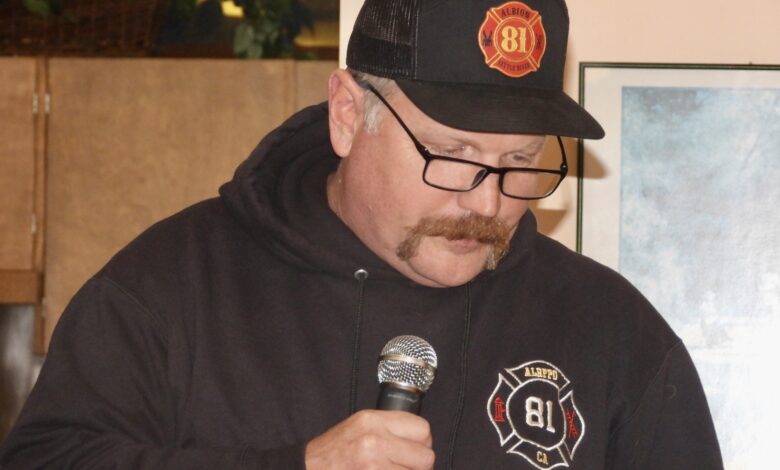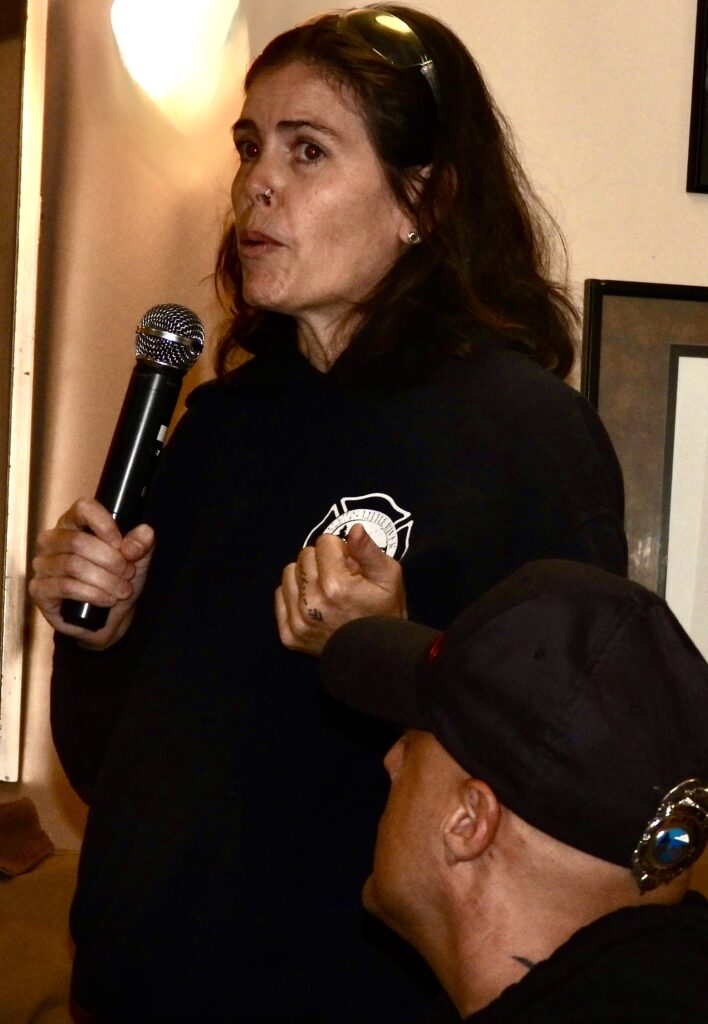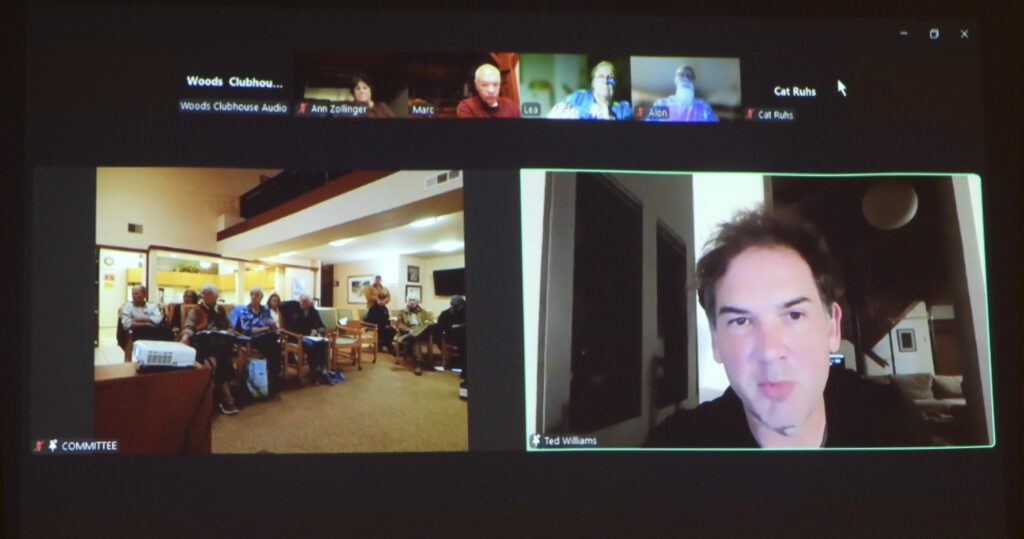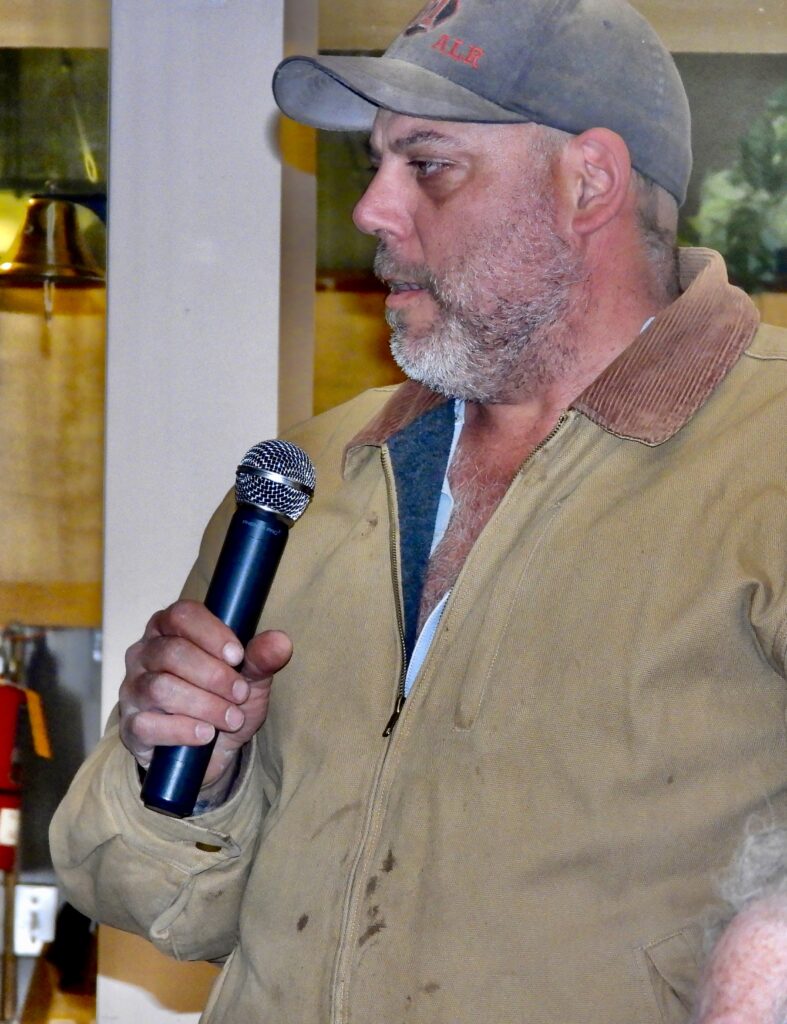A Path Forward: MendocinoCoast.News Proposes a Plan for Albion–Little River Fire Beloved Fire Department Services

A group of Albion and Little River elders is proposing a new parcel tax to support the critical needs of the Albion Little River Fire Protection District. Under the plan, parcels with residences would be taxed $600 annually; non-residential parcels would be taxed $150. The funds would replace outdated equipment and help hire two additional full-time firefighters—joining the already-funded chief.
For full details on what’s being proposed, read our main story. Come to the meeting at the Whitesboro Grange tonight. Wednesday. There is no WIFI at the Grange so there will be no Zoom.
We attended the first meeting about this proposed bond, recorded it, reviewed it thoroughly, and spoke at length with community members. We asked plenty of questions and received thoughtful answers from both the ballot sponsors and the fire department team.
We’ve been writing about Albion and Little River since 2004 and know many of the folks involved. We spoke with several after the meeting as well. While we Cleone folk don’t claim to be experts on Albion and Little River, we’ve done our best to offer a suggested plan—and we’ll be at Wednesday’s meeting too. Our hope is to help spark ideas and encourage community input.

• Oversight. Because this bond is being proposed by folks who are not firefighters or members of the Albion Little River Fire Protection District board, we doubt it could be administered directly by the ALRFPD board??? Yes? No??. The whole idea of the new approach is to put distance between the fire department and those raising money for it. Even if it could be done by the board (we are not experts on these legalities), we believe there should be an independent oversight committee tasked with shaping a long-term vision for fire protection in the district.
That vision includes more than just hiring needed staff and replacing broken, outdated equipment—it must also tackle the longstanding water access issues that have hamstrung this remarkable community for decades.
The oversight body could be the ALRFPD board itself, meeting in a new capacity, or it could be a hybrid: three board members plus four community members from The Woods and beyond. That kind of structure might best pass both the legal test and the community sniff test—but ultimately, that’s for Albion to decide.
For the rest of this piece, we’ll refer to our proposed oversight group as the Albion Futurists.
• Let’s support those who can’t afford it. Six hundred dollars a year is a heavy lift for many in Albion right now. Based on what we’ve heard, the amount isn’t excessive—but it’s still a burden for some. That’s why the Albion Futurists should pursue grants and donations to build a support program for those who need help covering the cost.
There are plenty of property owners, inns, and absentee ultra-wealthy folks who benefit from the fire district and could fund this entire effort with what amounts to pocket change. The assistance program should have clear, fair criteria—and funds should go directly toward the tax bill, not be handed out as cash.

Others tuned in remotely via Zoom.
• Let’s tackle the water problem too. Having trained firefighters without a reliable water supply is like sitting on a three-legged stool with one leg missing. The reverse is just as risky: if Albion secured a grant and built a water tank but didn’t have the staff to use it, homes could still burn.
Fort Bragg got a grant to build a million-gallon tank. Albion doesn’t need one that big—but it does need a solution. From what we understand, Little River has made more progress on this front than Albion. Still, no one seems to have a full picture of the problem.
This bond should fund a comprehensive water study to identify the issues and outline real solutions. The Albion Futurists must be just as committed to solving the water crisis as they are to staffing the fire department.
There’s no reason the chief and two full-time firefighters couldn’t dedicate a few hours a week—especially in summer—to help move this forward. That time could be reimbursed through future grants. Maybe they can learn from the grant masters at Fort Bragg City Hall or Noyo Harbor. Fire organizations might help too (though based on past experience, maybe skip the county’s advice).
• We need to understand why volunteers have stepped away. This question came up repeatedly in our conversations. We didn’t ask about current volunteer numbers at the last meeting—and we should have. How many volunteers are there now? If people have left, why?
We heard that many residents commute to Fort Bragg or Ukiah for work, making it hard to maintain a volunteer base. That explanation makes some sense—but there may be more to the story.
This funding proposal is not a gift to Chief Rees or the District. It’s a tool for the Albion Futurists to chart a sustainable path forward—one that transcends individual names and personalities. While past and present volunteers deserve deep respect, the future of fire protection must not hinge on any one person.
Those paying the tax must be able to count on the ALRFPD and the Futurists to make the hard, human decisions required to build a resilient system for the long haul.

• Let’s see the gear—up close. We need a clear, public inventory of all fire department equipment—something that looks and reads like a “for sale” listing. Each item should include a photo, make, model, year, mileage or hours, a short assessment of remaining service life, and an estimate of replacement cost.
At the meeting, there was a lot of pride in the department’s new truck—and for good reason. It’s already earned back half its purchase price by responding to major fires alongside other departments. In those cases, volunteers are paid for their time, and the truck earns revenue too.
In contrast, there were stories of the past: outdated rigs that couldn’t be sent to mutual aid calls, equipment so worn out it was embarrassing to deploy. One truck sent to the deadly Mendocino Complex Fire (year?) failed inspection at the end. Chief Rees said the only reason it was allowed to return was because Albion was nearby. Other stories included permanently parked engines and volunteers jump-starting failing rigs when they should’ve been en route to emergencies.
The chief—who’s also a certified EMT—has a solid rescue rig, but it’s not built for fire suppression. The new truck is the only one that meets inspection standards and can roll out to big fires.
It wouldn’t take much for the paid staff and the district to photograph each piece of equipment and provide a short, honest report. Seeing the gear for ourselves—what works, what doesn’t, what’s needed—would go a long way toward building trust, passing the bond, and inspiring donations.
• We need full transparency. There should be a public dashboard where every dollar spent and every identified need is clearly documented. This should be linked to the equipment report, giving residents a full picture of what’s being funded and why.
We won’t go into deep detail here, but there should also be a visible list of current volunteers and their qualifications—something akin to a human resources roster. After all, equipment and personnel are the two core areas this bond aims to support.
• We need to know who’s paying—and who isn’t. Transparency matters. A full map of the district should be made public, along with a list of all parcels and the amounts paid. Ideally, this would include names, but if privacy concerns arise, a list by APN (Assessor’s Parcel Number) would still provide clarity.
We also need to identify cases where individuals or entities are paying multiple times—and those who aren’t paying at all. That includes absentee owners, commercial properties, and high-value parcels that benefit from fire protection but may not be contributing their fair share.

The Albion Futurists should develop a clear strategy to ensure commercial parcels are equitably taxed. That means fleshing out the details, identifying gaps, and proposing solutions that balance fairness, legality, and community trust.
• When the Hospital District in Fort Bragg got us to pass a bond a few years back they included a process whereby people with contiguous parcels NOT get taxed twice. So someone in Albion has blank one acre parcel attached to their one acre homestead. The only reason it exists is someone created two APN numbers. As far as we can tell, this property will pay $300 per parcel and another $300 for their home. This would be $900. We think that is wrong. They should pay $600, the same as their neighbor who has 20 acres but only one APN.
•We need community engagement and a survey. This is last but by NO MEANS least on this list. We need to do engagement meetings with the community, even if it costs something. See how Fort Bragg city does this and gets support and comprehension, while other taxing agencies on the Coast are mostly a failure at communication and don’t do community engagement. People have failed to realize the Advocate and Beacon fired everybody, sold all their buildings and left town, seeking to bleed to death. These assets that were once key to talking to the community. People are no longer getting the message, folks. We think there should be a detailed survey mailed out to every member of the community.. Not a showy survey designed to improve the image of the entity sending it out (mostly this is what you get) Mendocinocoast.news would help put together a survey of the community on water, fire and the future in which the district could get feedback for a big community engagement meeting to be held next summer before the item ends up on the ballot in November 2026.
Here is a bit of heresy, I’m sure that only a Fort Bragger would suggest. Perhaps the modern demands for so much more training demands a merger at some point with the Mendocino Fire Department or Elk or Comptche? Would this area simply be impossible to cover with a single paid chief and paid firefighters spread out across the area? What about combining in some way with an ambulance company in the future?
And finally—let’s channel Bernie. We wish Bernie Mac were still here to run this by. The old New Englander who somehow became Albion’s chief Hippie to many had a mind like a compass—logical, scientific, and relentlessly objective. Whether a claim leaned left or right meant nothing to Bernie; he helped us find the facts.
When something felt off, Bernie would walk it through with you—slowly, methodically, and always with clarity. It took him fifteen minutes to say anything, and it was a bit like getting wisdom from Keith Richards: the mumbling in a New England accent flared most while he was thinking. But beneath that drawl was genius.
We’ll have to channel him now. We always did anyway.
Because this isn’t just about trucks, taxes, or turnout—it’s about building something that lasts. Something rooted in truth, community, and the kind of quiet brilliance Bernie carried. If we can summon even a fraction of that clarity, this bond might just become more than a measure—it might become a legacy.
One that speaks in full sentences, even if it takes fifteen minutes to get there.
